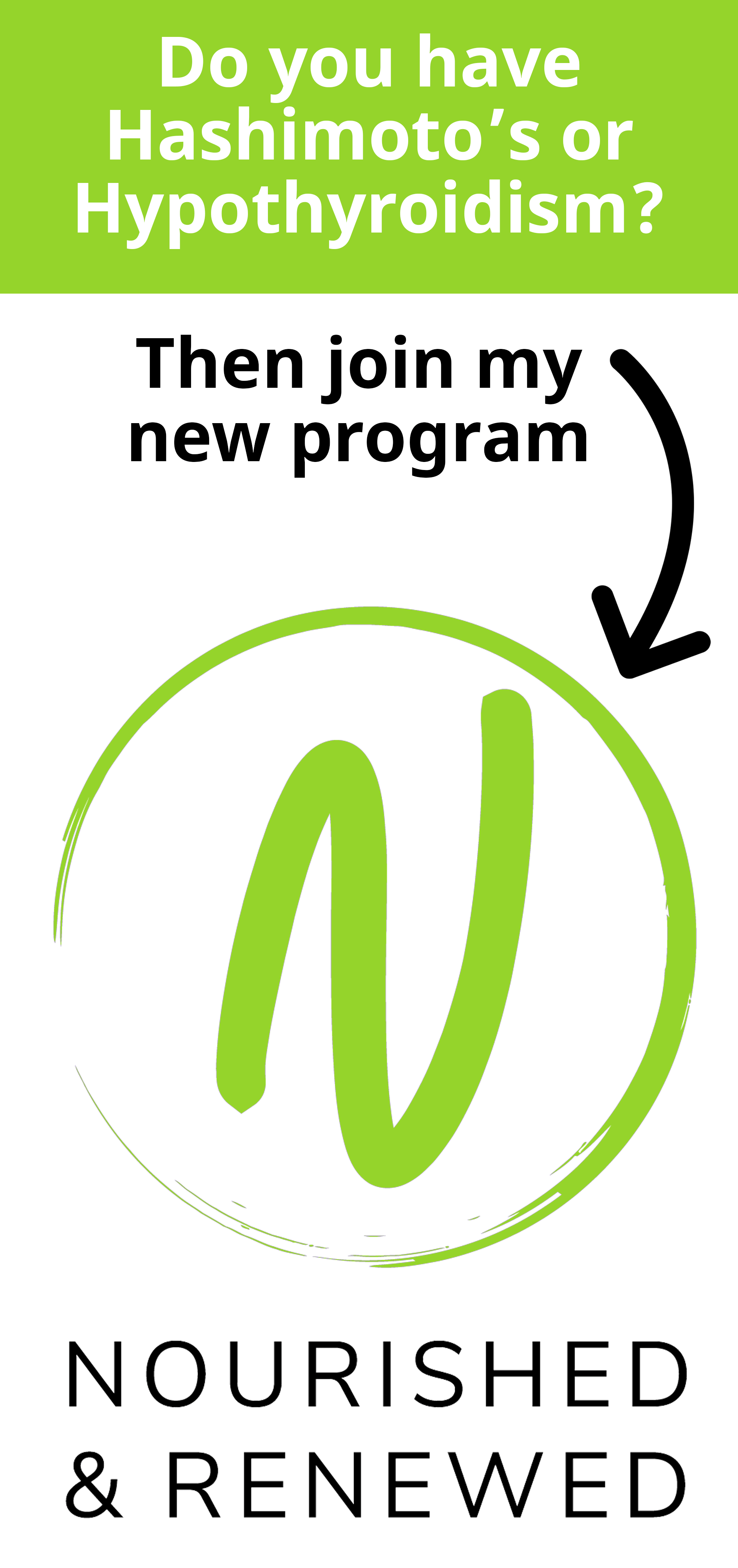There is something so quintessentially summer about a bright, beautiful, cold smoothie or fresh juice, sipped on your porch or patio. Tons of fruits and vegetables are in season, it’s cooling and refreshing, and juice and smoothies both support a healthy summer lifestyle.
There’s been so much debate about the pros and cons of both juicing and smoothies.
Are they too high in sugar?
Too low in fiber?
Can they constitute a meal or meal replacement?
I’m here to tell you that, done right, juices and smoothies can not only be a delicious way to get your fruits and vegetables, they can be carriers for all sorts of health-promoting foods and can even replace some of your meals while keeping you satiated.
So, stop worrying or wondering about these health trends - smoothies and juicing can both be part of your healthy lifestyle!
Read on to find out how!

Juice Versus Smoothie
First, it’s helpful to know what the difference is between juices and smoothies.
What’s Actually In a Glass of Juice?
When I talk about juices, I’m not talking about most of the store-bought juices that have been processed to remove much of the nutrients that would naturally come from fruit and veggies.
Those juices have been pasteurized, the heating of which damages vitamins and enzymes.
Store-bought juices often contain preservatives to make them last longer but may not be healthy for you.
Juices can also have sugar or other sweeteners added to them, or just other juices that are cheaper than the fruit on the front label. (Grape juice is a common one. Apple is another.)
One “real” juice option is the high-end juices found in stand-alone shops that make their own products from quality and often organic fruits, vegetables and spices.
If you have to, read the labels or ask but these are less likely to be pasteurized or contain unwanted ingredients.
The downside is the price.
Depending on the product, your location and other factors, each single serving of this artisial juice can cost $8-12 for an individual serving.
If you are doing a juice-based cleanse or even just drinking these regularly, this adds up very quickly.

Making Your Own Juice At Home
Another option is to make your own juice.
There are a number of upsides to this: you can choose your own ingredients (meaning you can decide how you want it to taste but also opt for organic ingredients), you can drink it as soon as it’s made, meaning it doesn’t get any fresher, and the cost per serving is much less.
However, the savings may not factor in the cost of the juicer itself, which can run you anywhere from $40 to more than $500.
Unfortunately, you sometimes get what you pay for with juicers but you also do not need the highest-end model either. The $100-200 range will usually get you a decent version. (I am a big fan of my quiet and easy-to-clean Hurom juicer.)
Whether you make or buy your juice, one thing remains the same: you are not getting the fiber from the produce. We’ll get into what that means in a bit.

What Makes Something A Smoothie?
Smoothies on the other hand, include anything that is contained in the fruit and vegetables, fiber and all. Smoothies are made by blending in a blender, so nothing is lost.
Your Home-Made Smoothie
While blenders can be cheap, if you’ve ever had a really smooth smoothie (oh, THAT’S why they call them that!) without a single lump but with a very even texture, it was probably made in a higher-end blender, like a Vitamix, Ninja or Blendtec.
Blenders can also cost around $40 to $500, although some companies like Vitamix offer refurbished options.
I got a Vitamix nearly 20 years ago and I have not been disappointed. It has more than paid for itself with daily use (for more than just smoothies; I also use it for soups, dips and more!)

Health Differences Between Drinking a Smoothie and a Juice
Juices and smoothies can each have a healthy place in the diet and can serve different purposes.
Smoothies contain all the nutrients and benefits of the produce used in them, including fiber, which can slow the blood sugar reaction to fruits in the smoothies.
Fiber is a great support for healthy bowel movements.
Smoothies can also include non-produce ingredients like fats and oils, and nuts and seeds, again great if you have a condition that has you paying attention to your blood sugar.
But to get all those foods into a smoothie, you can end up with a lot to drink.
They can be filling, which can work well as a meal replacement, or can be too much if you just need something more concentrated and light.
Juices, on the other hand, are extremely nutrient-dense for the amount consumed, because just the juice is extracted, leaving behind the fiber-based pulp.
Without the fiber, however, juice can cause a glucose (blood sugar) rise.
Just be cautious with juicing if you have diabetes or another blood-sugar-sensitive condition.
The lack of fiber makes juices very easy to digest, making them a great food during a detoxification (also works well for detox during breastfeeding) or during low-fiber therapy to support conditions like diverticulitis. So, this low-fiber option does have some health benefits as well.
Detoxing through a juice program allows the digestive system to rest and focus on ridding the body of toxins. Many people incorporate juice blends into their annual spring detox program.
But if you experience constipation during a detox (or at any other time), fiber may need to be added to the diet to support healthy bowel movements.

Getting Your Veggie Boost
One of the best things about both juicing and smoothies for many people is getting in their vegetables for the day.
A lot of people struggle to get enough veggies in their diet. And while eating both cooked and raw veggies are important, these delicious drinks can be part of the solution.
Don’t think of it as hiding your veggies, because it’s important to find ways to actually enjoy vegetables.
If your juices and smoothies contain fruit, but not vegetables, they may taste delicious but they may be lacking in necessary vitamins and minerals, such as magnesium and iron (both are found in dark leafy greens).
And, I will say it again, just to be clear, sugar levels may also be too high without veggies. It is important to watch sugar levels with both juice and smoothies.
Bonus: Both juice and smoothies are a great way to get kids to drink their vegetables too!

Green Blender Juice or Smoothie Recipe
Ingredients
- 1 1/2 cups pineapple (diced)
- 1 cucumber (diced)
- 4 cups baby spinach
- 1 cup parsley
- 1 Tbsp ginger (peeled)
- 10 ice cubes
- 1 lemon (juiced)
- Combine all ingredients together in a blender. Blend very well until smooth. Be patient! It may take some time to really liquify.
- Pour into a glass and enjoy as a smoothie.
- For a juice, use a nut-milk bag or cheesecloth to strain the smoothie. Pour the smoothie through the bag and use clean hands to squeeze out all the liquid into a bowl. (Note: You can also use a strainer and the back of a spoon for this step, it just takes a bit longer.) Pour the juice into a glass and discard the pulp. Enjoy!
How Much is Too Much?
You may wonder how many juices or smoothies you can drink in a day. This is a great question considering how delicious they are.
If you have done a detox before, you may be aware of juice cleanses.
The idea behind this is to substitute juices for meals, and many people who do this drink three or four each day of their cleanse, or even more.
While this can deliver an amazing amount of detoxifying nutrients to your body in the short term, long term you may be missing out on important fats and proteins, even in small amounts.
And, again, you’re causing your blood sugar levels to rise more than you may even know.
Another approach is to do what’s called Juice Til Dinner, which is just what it sounds like.
All meals before dinner are replaced with juicing, followed by a detox-supporting evening meal. This is a little more my jam, because it still incorporates a whole-food-based, balanced dinner, including fat and protein.
Ok, so having said that, smoothies by themselves are a wonderful source of micronutrients, as well as protein and healthy fats.
But if you drank a smoothie for every meal, most likely, your calorie intake would be crazy high.
Listen, be smart and include all that healthy yumminess into your smoothies (see below for tips).
With some practice, you can use one smoothie per day or a few times per week as a meal for an excellent addition to your nutrition plan. Just not all your meals, please.😉

Juicing and Smoothies Beginners’ Tips
If you are newer to juicing or smoothies, you may find you need to ease into them being a regular part of your diet.
This may be especially true of juicing, as it can have pretty strong detoxifying properties.
Start with a juice or smoothie every two or three days before having them everyday, if that’s your goal.
And if you want to use smoothies as a meal replacement for both breakfast and lunch, I would recommend easing into that as well.
Playing With Your Smoothies - What Else Can You Add?
One of my favorite things about smoothies is how playful you can be with them. You could make a different one every day, or tinker until you find your favorite.
But there are so many wonderful combinations, that it would almost be a shame to just stick to one.
Smoothies can be used as a snack between meals but if you intend to use them as a meal replacement, it’s important to balance your carbohydrates, protein and fats. That usually means going out of your way to add protein and healthy fats.
Here are some delicious fats you can try in your smoothies:
- Coconut milk or oil, shredded coconut
- Avocado
- Full-fat yogurt if you tolerate dairy well
- Hemp hearts, chia seeds, flax seeds, nuts or nut butters (rich in omega-3 fatty acids)
- Medium-chain triglyceride (MCT) oil
These are some great foods that will add some protein to your smoothie (you’ll notice some overlap with the high-fat foods):
- Hemp hearts, chia seeds, flax seeds, nuts or nut butters
- High-quality protein powder (but be careful of sweeteners)
- Collagen powder (again with the sweeteners)
- Full-fat yogurt if you tolerate dairy well

In addition, adding spices to your smoothies can make them taste oh-so-good and can be a great source of antioxidants and anti-inflammatories:
- Cinnamon
- Turmeric
- Ginger
- Pure cocoa powder
For both turmeric and ginger, if you can use fresh, it tastes even better and is more potent but dried works in a pinch too.
Sometimes the hardest part with smoothies is figuring out ratios to get the consistency just right. But playing around with it will soon make you an expert.

What Liquids Can You Mix With Your Smoothies?
One question I hear a lot from people trying out making their own smoothies for the first time is what liquid to use. You may feel like you need to use milk to get the creaminess you want from your smoothie.
If you tolerate dairy well, whole-fat, organic milk is certainly a fine option. But you do not need it to make a truly delicious drink.
Coconut water and nut milks are options that work quite well. An even better option (and one that is sure to save you some money) is using just plain ol’ water (filtered if you got it).
Since everything is being blended together already, water and a handful of the nuts of your choice will get nearly the same creamy result as a nut milk.
You may be tempted to add juice to your smoothie, but just as with juicing, if you use pre-made juice in your smoothies, avoid added sugars or sweeteners. A mixture of juice and water can get you tons of flavor without all the fruit sugars.
But even just water is plenty with all the other yummy things you’re already adding. You may find that’s all you need for the liquid.

What Not to Put in Your Drink
There’s plenty of ways to get your creative juices flowing (har har) with smoothies. But there are just a few foods you don’t want to add because they will add empty calories, unnecessary sugar and preservatives.
These are mostly restricted to sugar, soda, ice cream and frozen yogurt.
Smoothies do not equal milkshakes! (Or vice versa.)
It would be such a shame to put all this beautiful produce, protein, fat and spices in a blender and then ruin it with an unhealthy addition like a scoop of ice cream (save that for the occasional decadent dessert, not your healthy daily smoothie!).
You are not doing yourself any favors by adding a bunch of sugar.

Creative Juices Too
In all this focus on ways to have fun with smoothies, I may have neglected to emphasize the creative combinations you can create while juicing. Juices can and should be made with both fruits and vegetables, as well as fresh spices if you like.
This will again boost your nutrient levels, including antioxidants and anti-inflammatories.
For some people, starting with a single vegetable juice gets them in a routine with juicing.
You may have heard of celery juice and its health benefits - in fact, it’s becoming quite popular these days.
I agree there are some pretty incredible benefits to celery juice, but I am a fan of mixing flavors and boosting nutritional benefits.
Imagine combining kale, pineapple and turmeric. Or orange, carrot and ginger. Celery, pomegranate and pear.
See? Not to be outdone by smoothies, juices can have their fun too!
Drink Your Colors This Summer
Whether you go for juice or smoothies, with the right choices for the right situation, these scrumptious drinks can be a healthy addition to your diet and lifestyle.
They allow you to be playful and creative and are great for an on-the-go summer. You can replace your meals or help your body with its natural detoxifying processes. They help you get your fruits and veggies and kids love them.
Drinking juices and smoothies just might be the most fun you can do for your health.




